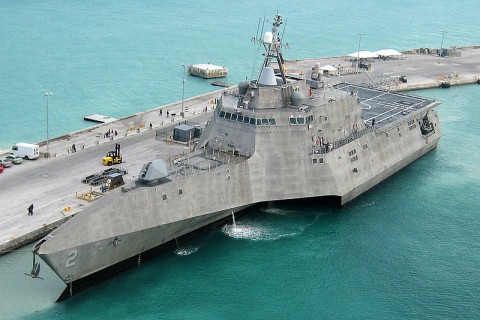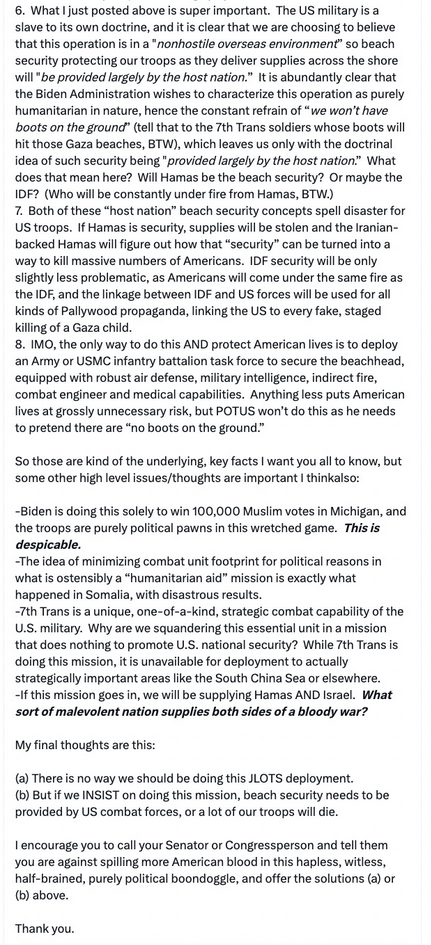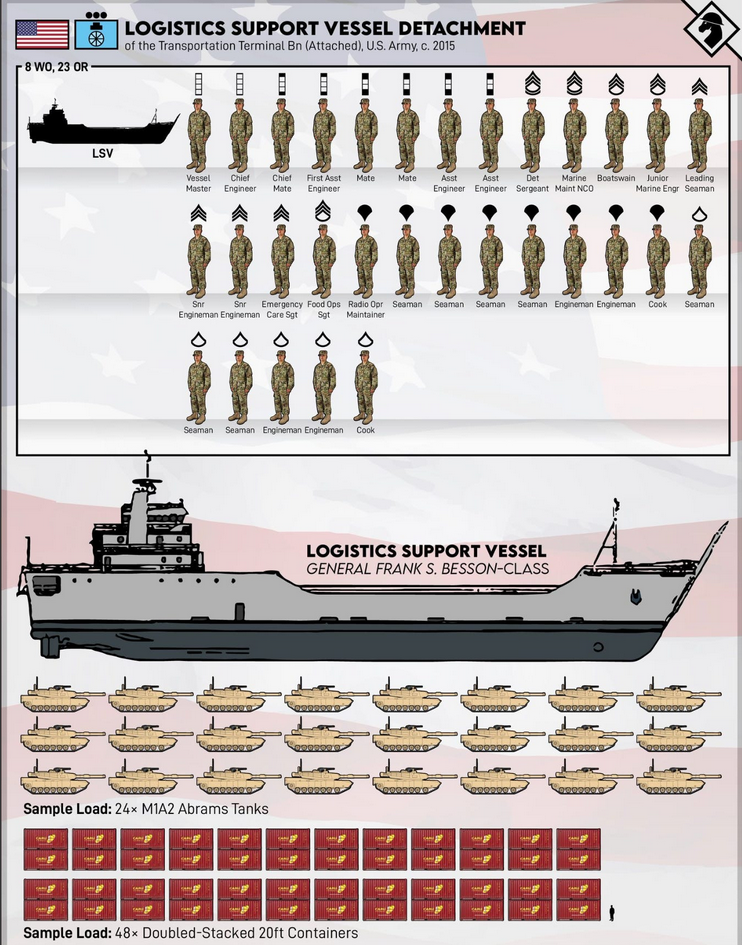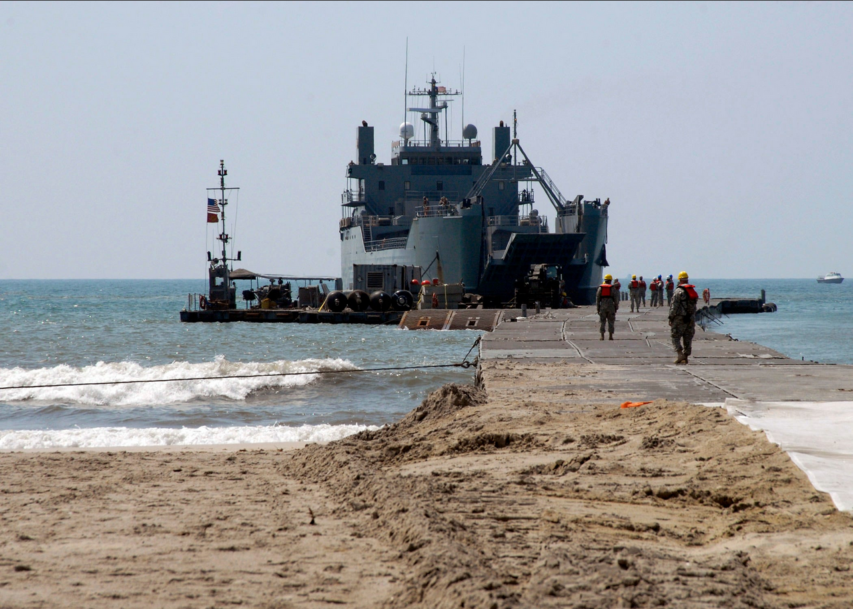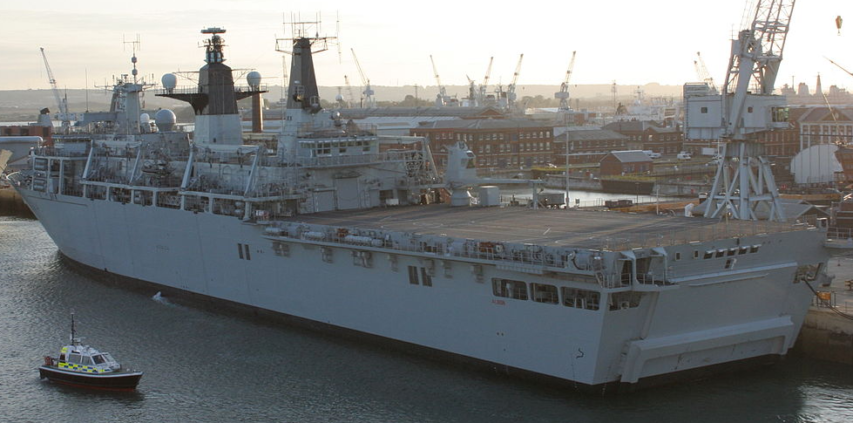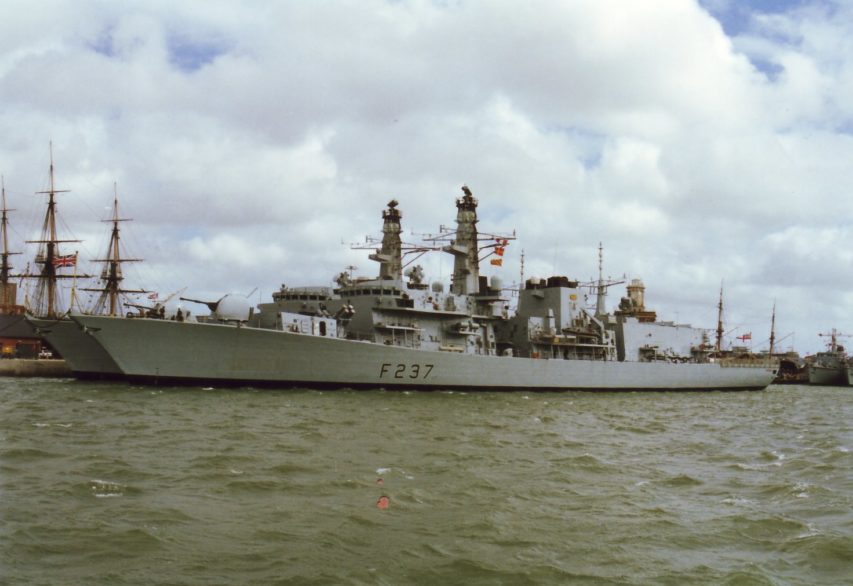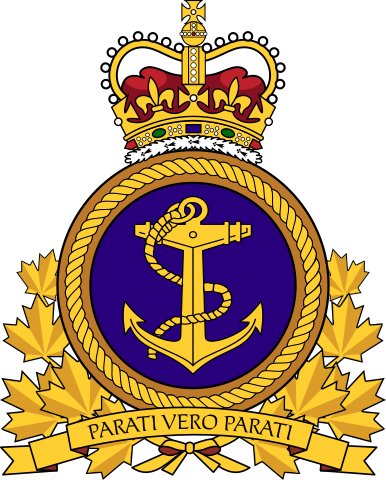Warships are complicated engineering marvels, requiring extensive work and support to keep operational and effective. A modern escort ship is a floating town, able to generate power to provide life support and hotel services, propulsion, aviation operations and the ability to operate a variety of very complicated electronic systems and weapon systems, and it is built to do this while surviving damage from enemy attack.
This complex world requires attention on a regular basis, both to make sure that the constituent parts still work as planned, and also to update and replace parts with more modern or better alternatives, or to provide planned upgrades. For instance, it is common for new ships entering service to undergo a short refit to add in any extra capability upgrades that may have been rolled out since construction began, and to rectify any defects.
For the purposes of planning how the fleet works, the Royal Navy looks to provide enough ships to meet agreed defence tasks. In simple terms the MOD works out what tasks are required of it, and what military assets are needed to meet them. This can range from providing a constantly available SSBN to deliver the deterrence mission through to deploying the ice patrol ship to Antarctica.
Once these commitments are understood, planners can work out how many ships / planes / tanks are needed to meet this goal. For example, it may be agreed that the RN needs to sustain multiple overseas deployments, and also be able to generate a carrier strike group too.
If, purely hypothetically the requirement for this is 6 ships, then the next task is to work out how many ships are needed to ensure 6 ships are constantly available. Usually, this has historically been at a 3:1 ratio – one ship is on task or ready to fulfill it, one is in some form of work up or other training ahead of being assigned to the role, and one is just back or in refit.
In practical terms this means that the RN never looks to get 100% of its force to sea, but rather to ensure it doesn’t fail to ensure enough ships are available to meet all the tasks that it is required to do. Consequently there is always going to be a mismatch between the number of ships owned, and the number of ships deployed.
Sir Humphrey, “Inoperable or just maintenance”, Thin Pinstriped Line, 2019-10-24.
April 6, 2024
QotD: No navy ever has all its ships at sea at the same time
March 26, 2024
Why the USN isn’t using their “Littoral Combat Ships” in the Red Sea littoral zone
CDR Salamander explains why the US Navy has chosen not to deploy the ships specifically designed and built to operate in environments like the Red Sea:
On yesterday’s Midrats, my co-host mentioned that recently in the Red Sea our Navy has seen the most littoral combat it has in a very long time, but our Littoral Combat Ships are not to be seen. Why? Simple. They cannot conduct combat on the littorals.
This AM, fellow “First LCS Critic” Chapomatic sent me a link to an article from September of last year that I think at the time I made a passing comment on over at X, but did not bring here. Well, let’s fix that.
Why do we need to periodically drag LCS out of the gimp box and hoist her up for all to behold? Simple; as an example to others. We simply cannot afford another CG(X) or DDG-1000 situation with DDG(X) or any other ship we have in the design phase. We have already lost one generation of ship design due to the Age of Transformationalism.
With the Constellation Class FFG we now have building, we are at last taking the course I first suggested in 2006 to correct the error of LCS. That is our version of FREMM that was first commissioned by the French in 2012, a dozen years ago.
LCS was not a problem with our shipbuilding industry or even our design people – though there are areas to critique there. No, this was a people problem, a mindset problem, a culture problem.
It needs to be dragged up regularly. I last did a dedicated post on it back in August 2023. It is time.
As we dive into the details remember this; since the disaster of LCS no senior personnel have yet been held to public account. We have the same acquisition system. We have the same incentives and disincentives as before. Critics of LCS were pushed over to the off-ramp; its most NORK-like advocates promoted.
There is no guarantee this won’t happen again.
Joaquin Sapien at ProPublica and his extensive almost novella – not just an article – on LCS that even opens with a quote of the phrase that first came into the general conversation here on CDR Salamander; The Inside Story of How the Navy Spent Billions on the “Little Crappy Ship”.
Sadly, we did not even get a mention or link – though most of the arguments are the same ones we’ve been making here and on the OB Blog since 2004 – if you spot me six months or so, two decades ago.
Some people have critiques of ProPublica, especially from the right side of the spectrum, but I’m sorry – their critique here is spot on.
It starts right in center mass;
The USS Freedom had its own special place within the armada. It was one of a new class of vessels known as littoral combat ships. The U.S. Navy had billed them as technical marvels — small, fast and light, able to combat enemies at sea, hunt mines and sink submarines.
In reality, the LCS was well on the way to becoming one of the worst boondoggles in the military’s long history of buying overpriced and underperforming weapons systems. Two of the $500 million ships had suffered embarrassing breakdowns in previous months. The Freedom’s performance during the exercise, showing off its ability to destroy underwater mines, was meant to rejuvenate the ships’ record on the world stage. The ship was historically important too; it was the first LCS built, the first in the water, commissioned just eight years prior.
The summary of their findings in spot on, especially the last sentence;
Our examination revealed new details on why the LCS never delivered on its promises. Top Navy leaders repeatedly dismissed or ignored warnings about the ships’ flaws. One Navy secretary and his allies in Congress fought to build more of the ships even as they broke down at sea and their weapons systems failed. Staunch advocates in the Navy circumvented checks meant to ensure that ships that cost billions can do what they are supposed to do.
Both inside and outside the Navy, LCS critics warned two decades ago that 2024 would find the Little Crappy Ship roughly where it wound up
March 13, 2024
“They won’t be in Gaza, but they’ll be just offshore — a few hundred yards from Gaza”
Apparently a bunch of former military types are getting their collective panties in a bunch just because Biden is sending part of a highly specialized US Army support brigade to install a temporary offshore unloading facility to get “humanitarian aid” in to Hamas fighters the civilian population of Gaza. All the political advisors to the President want to assure everyone that there will be no “boots on the ground”, so there’s no real risk …
The Pentagon has said something that should make us all sit up and pay attention.
Quick background first:
Elements of the US Army’s 7th Transportation Brigade are on the way to Gaza. […] They won’t be in Gaza, but they’ll be just offshore — a few hundred yards from Gaza. Now read this, and take the time to read it closely. I’ll split it into two screencaps to get it all in, which will be awkward to look at, but you can just click on the link to see it all whole (and subscribe to keep up with “Cynical Publius” as all of this develops):
The extremely important part of all of that is that transportation troops aren’t combat arms troops; they’re armed for some degree of self-protection, but “they lack the organic ability to defend themselves against high-intensity attacks by enemies.” In a hostile environment, they need to be screened: they need to be protected by combat-focused forces, both on-shore and off. They need infantry in front of them, warships behind them, and aircraft overhead.
Now, via this account, look at this transcript of an … interesting Pentagon press briefing on March 8, in which a major general talks at length about the security plan for the 7th Transportation Brigade when it gets to Gaza. Sample exchange:
Q: (Inaudible) partner nations on the ground, but you’re talking about operational security, you can’t discuss what will be (inaudible).
GEN. RYDER: Right. I mean, we will — these forces will have the capability to provide some organic security. I’m just not going to get into the specifics of that.
But they don’t — or they do, but the capability of transportation troops, from a combat service support branch, is extremely limited. Again, these are not combat arms troops, and aren’t armed or trained as combat arms troops. Talking about their organic security capability is an interesting choice.
March 12, 2024
A JLOTS for Gaza?
The Biden administration has made a decision to create a temporary shore unloading facility to provide Gaza with “humanitarian aid”. The particular installation is called an Army Joint Logistics Over-the-Shore (JLOTS) and will be delivered by a US Army logistics ship, USAV General Frank S. Besson (LSV-1) which was reported as departing a base in Virginia and will arrive as soon as its 12-knot top speed will allow. CDR Salamander has the details:
… and yes my friends — the Army has its own navy. Let’s take a quick look at the Besson.
Yep’r, that 243 foot, 4,200 ton ship is commanded by … a Warrant Officer. Discuss amongst yourselves.
If you’re wondering what she looks like putting a JLOTS in place;
This will take about 1,000 personnel to accomplish. I don’t know a single maritime professional who thinks this is a good idea given the location and conditions ashore, but orders are orders. Make the best attempt you can.
An interesting note; this is not a Navy operation, but an Army operation. Remember what I told you about the fate of the East Coast Amphibious Construction Battalion TWO (ACB2) last summer? This story aligns well with the Anglosphere’s problem with seablindness we discussed on yesterday’s Midrats with James Smith.
As for my general thought on doing this? I’ll avoid the politics as much as I can, but I have concerns.
Generally speaking, no operation starts out on the right foot with a lie.
“We’re not planning for this to be an operation that would require U.S. boots on the ground,” said a senior administration official.
I’m not mad at the official. They are just making sure their statement is in line with higher direction and guidance. President Biden was clear in his SOTU speech;
The United States has been leading international efforts to get more humanitarian assistance into Gaza. Tonight, I’m directing the U.S. military to lead an emergency mission to establish a temporary pier in the Mediterranean on the coast of Gaza that can receive large shipments carrying food, water, medicine, and temporary shelters.
No U.S. boots will be on the ground.
You cannot build a pier, even JLOTS, without putting boots on the ground. Just look at the above picture again.
March 10, 2024
Viking longships and textiles
Virginia Postrel reposts an article she originally wrote for the New York Times in 2021, discussing the importance of textiles in history:
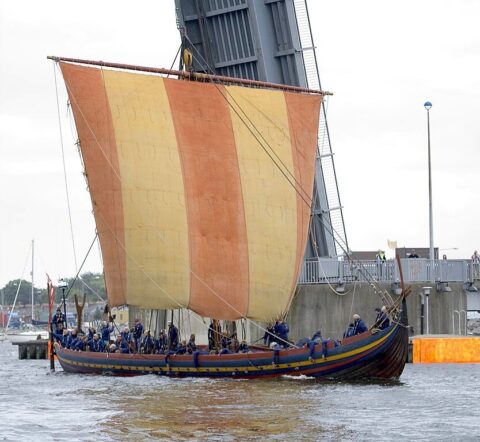
The Sea Stallion from Glendalough is the world’s largest reconstruction of a Viking Age longship. The original ship was built at Dublin ca. 1042. It was used as a warship in Irish waters until 1060, when it ended its days as a naval barricade to protect the harbour of Roskilde, Denmark. This image shows Sea Stallion arriving in Dublin on 14 August, 2007.
Photo by William Murphy via Wikimedia Commons.
Popular feminist retellings like the History Channel’s fictional saga Vikings emphasize the role of women as warriors and chieftains. But they barely hint at how crucial women’s work was to the ships that carried these warriors to distant shores.
One of the central characters in Vikings is an ingenious shipbuilder. But his ships apparently get their sails off the rack. The fabric is just there, like the textiles we take for granted in our 21st-century lives. The women who prepared the wool, spun it into thread, wove the fabric and sewed the sails have vanished.
In reality, from start to finish, it took longer to make a Viking sail than to build a Viking ship. So precious was a sail that one of the Icelandic sagas records how a hero wept when his was stolen. Simply spinning wool into enough thread to weave a single sail required more than a year’s work, the equivalent of about 385 eight-hour days. King Canute, who ruled a North Sea empire in the 11th century, had a fleet comprising about a million square meters of sailcloth. For the spinning alone, those sails represented the equivalent of 10,000 work years.
Ignoring textiles writes women’s work out of history. And as the British archaeologist and historian Mary Harlow has warned, it blinds scholars to some of the most important economic, political and organizational challenges facing premodern societies. Textiles are vital to both private and public life. They’re clothes and home furnishings, tents and bandages, sacks and sails. Textiles were among the earliest goods traded over long distances. The Roman Army consumed tons of cloth. To keep their soldiers clothed, Chinese emperors required textiles as taxes.
“Building a fleet required longterm planning as woven sails required large amounts of raw material and time to produce,” Dr. Harlow wrote in a 2016 article. “The raw materials needed to be bred, pastured, shorn or grown, harvested and processed before they reached the spinners. Textile production for both domestic and wider needs demanded time and planning.” Spinning and weaving the wool for a single toga, she calculates, would have taken a Roman matron 1,000 to 1,200 hours.
Picturing historical women as producers requires a change of attitude. Even today, after decades of feminist influence, we too often assume that making important things is a male domain. Women stereotypically decorate and consume. They engage with people. They don’t manufacture essential goods.
Yet from the Renaissance until the 19th century, European art represented the idea of “industry” not with smokestacks but with spinning women. Everyone understood that their never-ending labor was essential. It took at least 20 spinners to keep a single loom supplied. “The spinners never stand still for want of work; they always have it if they please; but weavers are sometimes idle for want of yarn,” the agronomist and travel writer Arthur Young, who toured northern England in 1768, wrote.
Shortly thereafter, the spinning machines of the Industrial Revolution liberated women from their spindles and distaffs, beginning the centuries-long process that raised even the world’s poorest people to living standards our ancestors could not have imagined. But that “great enrichment” had an unfortunate side effect. Textile abundance erased our memories of women’s historic contributions to one of humanity’s most important endeavors. It turned industry into entertainment. “In the West,” Dr. Harlow wrote, “the production of textiles has moved from being a fundamental, indeed essential, part of the industrial economy to a predominantly female craft activity.”
February 25, 2024
Battleships – Ruling the Waves Across the 7 Seas – Sabaton History 124 [Official]
Sabaton History
Published Nov 16, 2023They were as much symbols of national pride as they were mighty weapons of war, but they were indeed MIGHTY. Dreadnoughts, battleships, super battleships — Sabaton has covered them in songs more than once, and today we dive into the battleship craze of the early 20th century: the Age of the Battleship!
(more…)
January 26, 2024
Canada’s sooper-sekrit warship program
David Pugliese on the cone of silence the federal government seems to have pulled down over the Canadian Surface Combatant shipbuilding program as it steadily escalates in total cost to the taxpayer:
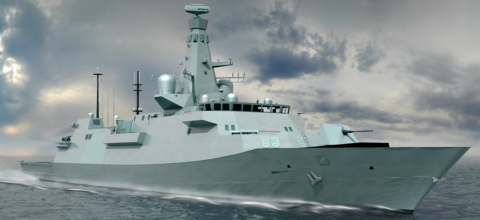
An artist’s rendition of BAE’s Type 26 Global Combat Ship, which was selected as the Canadian Surface Combatant design in 2019, the most recent “largest single expenditure in Canadian government history” (as all major weapon systems purchases tend to be).
(BAE Systems, via Flickr)
National Defence has brought in a new and unprecedented shroud of secrecy around a controversial warship project now estimated to cost taxpayers more than $80 billion.
After withholding documents for almost three years, the Department of National Defence has released nearly 1,700 pages of records that were supposed to outline specific costs and work done so far on the Canadian Surface Combatant program.
But all the details of what taxpayers have so far spent and what type of work has been done by Irving Shipbuilding for that money have been censored from the records.
“I pretty much got nearly 1,700 blank pages,” Ken Rubin said of the access to information request he filed to National Defence in April 2021 about the warship program. “I have never seen this level of secrecy or lack of accountability over a project that is costing so much.”
Rubin, an investigative researcher who has used the access law to obtain federal documents for decades, said there was not a single cost figure contained in any of the 1,700 pages. One page noted that Irving was required to perform 19 specific tasks, but all details were censored. Others pages listed numerous amendments made to the CSC program, but all details were blacked out. Information about the annual profit Irving has made so far on the CSC project is censored.
Irving declined to provide comment, referring this newspaper to National Defence.
Defence Minister Bill Blair’s office sent this newspaper a statement noting the “minister believes strongly in openness and transparency, and expects the Department of National Defence to respect the rights of Canadian citizens, permanent residents and persons or corporations present in Canada, to access records of government institutions that are subject to the Access to Information Act“.
National Defence noted in a statement that, since some of the records involved Irving Shipbuilding, government officials consulted with the firm to determine if the records contained proprietary information of the firm. Irving objected to the release of information, the department added.
But Rubin pointed out that National Defence was not required to follow Irving’s orders on what records could be released to the public. The amount of tax dollars spent on the surface combatant and how that money was being spent shouldn’t be secret, he added.
In addition, National Defence originally claimed in a statement to this newspaper that the long delay in providing the documents was because Rubin had asked for 20 years of records. But, when challenged on that claim, the department acknowledged it wasn’t true. It did not, however, provide an explanation why it had provided false information to this newspaper.
The Canadian Surface Combatant project will involve the construction of 15 warships for the Royal Canadian Navy at Irving on the east coast.
January 25, 2024
USS West Virginia
The History Guy: History Deserves to be Remembered
Published 26 October 2023On December 7, 1941, the battleship USS West Virginia was at Pearl Harbor, moored on Battleship Row, next to USS Tennessee. During the Japanese attack, she was struck by seven torpedoes, sinking in shallow water. But the “We Vee” would rise again, and she would lead the American line of battle at the last battleship on battleship action in history. USS West Virginia deserves to be remembered.
(more…)
January 19, 2024
Those passionate Houthi and the Blowfish fans
Chris Selley wonders why the rest of the Canadian legacy media are being so careful to proactively curate and “contextualize” the violent and hateful message of the pro-Hamas and pro-Houthi protesters in our cities:

The Houthi Ansarullah “Al-Sarkha” banner. Arabic text:
الله أكبر (Allah is the greatest)
الموت لأمريكا (death to America)
الموت لإسرائيل (death to Israel)
اللعنة على اليهود (a curse upon the Jews)
النصر للإسلام (victory to Islam)
Image and explanatory text from Wikimedia Commons.
The record will show I had little sympathy for the Ottawa convoy crowd, especially once they had made their point and refused to go away. You can’t occupy the downtown of a G7 capital for a month. Sorry, you just can’t.
At the same time, I cringed at the media’s fevered attempts to cast the entire crowd as neo-Nazi oafs, based on what seems to have been two observed flags — one Confederate, one Nazi.
I recalled this while watching video footage of protesters in Toronto over the weekend chanting “Yemen, Yemen, make us proud! Turn another boat around!” Because the Houthis, who control Yemen’s Red Sea coast and have been waging war on commercial shipping, are about as neo-Nazi as it gets in the world nowadays.
The movement’s official slogan: “Allahu Akbar! Death to America! Death to Israel! Curse the Jews! Victory for Islam!” As if to drive home the point, there is ample video evidence of Houthi fighters chanting that slogan with their hands raised skywards in a Nazi salute.
The Houthis use child soldiers (as video evidence also makes horrifyingly plain). They are literally slavers. I have seen it suggested, by way of context, that they really don’t have that many slaves. Just a few slaves. It’s so hard to get good help.
But I haven’t seen anyone try to “contextualize” the Houthi slogan, the way Palestinian supporters will tell you “from the river to the sea” isn’t a call for Israel’s destruction and cheering for “intifada” doesn’t mean further terrorist attacks against Jews. Perhaps it’s just too big a job for even the most dedicated and creative of apologists.
Outside of the Postmedia empire, so far as I can see, not a single Canadian media outlet has seen fit to mention the chanting in Toronto streets in support of a rabidly antisemitic death cult. You can read several articles, however, about how Canadian media are terribly biased against the Palestinian cause. It’s ludicrous.
A nice little illustration, as the National Post‘s Tristin Hopper noted in November: When the convoy crowd appropriated Terry Fox’s statue, just opposite Parliament Hill, for their “mandate freedom” message, the Laurentian bubble nearly burst with righteous fury. When pro-Palestinian protesters draped a keffiyeh over Fox’s shoulders and had their kids pose with him, there was all but total silence.
Of course, flamboyant media double-standards aren’t the worst of our problems.
January 8, 2024
Royal Navy to retire their only two LPDs?
Sir Humphrey comments on the recently reported “leak” about several Royal Navy ships:
In an “inspired” leak that seems to fit the Yes Minister definition of a “Confidential Security Briefing”, the Daily Telegraph is reporting that the Royal Navy is to pay off two Type 23 frigates, HMS Argyll and Westminster early in order to find crew for the Type 26 frigates. Assuming this is true, this means that since 2010 the Royal Navy escort fleet will have been cut by 40%. Meanwhile the Times is reporting that the Royal Navy will mothball both LPD’s and no longer have an active amphibious assault ship command platform. This represents a 100% cut to the active assault ship force. The reasons given in both cases seem to boil down to the line that this is about providing sailors to crew the Type 26 frigate. It doesn’t seem to be linked to the rumoured huge budgetary challenges facing the MOD this financial year, which could equally be responsible for this decision.
There are different ways that this information can be interpreted depending on how you look at it. For starters we need to ask the question, why these two ships? The Type 23 force is elderly, with the ships intended for an original 18-year life span, worked hard in the North Atlantic and replaced quickly. They have all been extended in service for up to twice their original design life, while repeated delays to order the Type 26 has meant they are working far harder, and far longer than ever anticipated.
HMS Albion docked at Portsmouth, 26 July 2029.
Detail of a photo by David Crochet via Wikimedia Commons.These are ships designed 40 years ago, with the original Type 23 design dating back to the early 1980s. It is no exaggeration to say that there is almost certainly no one left in active regular service who was serving when the Type 23 design was first conceived. This means the design reflects the 1980s equipment and capabilities and standards – be it in the structure of the messes (large mess decks for junior sailors) or the internal wiring and machinery. While still capable, be in no doubt that these are elderly ships with all the many challenges that this brings. To make up for the many and varied delays to the Type 26, the RN has funded life extension work to the force for some years, fitting new missiles, guns and sonar equipment over time. The modern Type 23 is a far cry from its original design in equipment and capability, but it is still at its heart a 1980s warship.
Westminster had gone into refit in 2022 to begin the process of extending her life out to the late 2020s. The refit for Westminster would have cost around £100m to provide a further 4-5 years of service. while HMS Argyll had undergone the life extension process which would have seen a planned decommissioning in the late 2020s (the precise dates are not clear anymore due to the “odd” MOD decision to currently no longer provide this information on the grounds of operational security).
The LPD force by contrast is in a different position. The two ships Albion and Bulwark were built to replace the venerable Fearless class in the mid 2000s. For most of their career one has been in reserve while the other has been active, the same pattern as occurred with Fearless and Intrepid, where the latter spent years in increasingly poor state in reserve. The timing for this decision makes sense operationally as Albion has come to the end of her commission and was due to pay off into reserve, while Bulwark is still being regenerated in refit and hasn’t yet gone to sea. It would be possible to put both ships in reserve and free up a reasonable amount of sailors in the process.
The question is what is the impact on the fleet itself? Currently the RN probably has a requirement for 19 escort ships – “probably” is used as the MOD has refused to provide a statement on target force numbers in the two most recent Defence Reviews, so this is an assessment based on the 2015 Defence Review. That we have to rely on a near decade old defence review to guess how many escorts the RN plans to have speaks volumes for the manner in which the MOD engages with the taxpayer.
December 7, 2023
Canada is great at gesturing on the international stage … far less so in doing anything substantive, especially militarily
In The Line, Harrison Ruess channels his inner Star Trek geekiness to illustrate the Kobayashi Maru situation the Royal Canadian Navy (and the rest of the armed forces) find themselves in:
Canada is, and has been for some time, caught between two irreconcilable positions. We don’t want to spend any money on the military but also continue to prioritize how important and influential we want to be in the world (“Canada is back”, etc).
Friends, either of these things is possible. We just can’t do both at the same time.
So let’s have an honest conversation and decide which road we want to go down, commit to it, and then do the best we can in whichever adventure we choose. Talking, domestically and internationally, about how determined Canada is to make a positive impact in the world, while not investing in the systems to give our words weight, sets both Canadians and our allies up for disappointment. The old adage that it’s best not to over-promise and under-deliver should be remembered. We seem to aspire to the reverse.
If Canadians really don’t want to invest in our military, then we need to be honest about the consequences of those decisions. It means a more inwardly focused Canada, less able to support our allies, with fewer seats at big tables, less able to respond to emergencies or disasters, and likely less able to help our own. Given our unstable world, I would not personally advocate for this road, but there is a case to be made for it. So if you are someone who thinks this is the right path, then make your case honestly. Explain why you think it’s swell that our navy will need to launch under-equipped vessels, or not launch them at all. Defend your ground. But stop trying to sell Canadians a fable that we can have a shell of an armed forces while at the same time having increased global influence and impact.
On the other hand, if we do think Canada has a positive role to play — and even a responsibility — in trying to bring some order to the world, help those who need it, and ultimately protect our own interests, then we need a military, and a military budget, strong enough to meet the demands of the task. This includes procurement budgets, maintenance budgets, budgets to offer competitive wages, and budgets to sustain missions, both training and the real deal.
Proponents of this position need to do a much better job of explaining why this is the best path to both improving the lives of Canadians and stabilizing our destabilized world. Then our governments must pursue and defend this road, even when defence isn’t top of the polling priority list — which it never is.
The current status-quo doesn’t work. It’s dishonest. And most importantly, it hurts Canadians and our awareness of what our country is — or isn’t — capable of doing. Kudos to V.Adm. Topshee for, in not so many words, trying to explain the impact of this reality on the navy.
Having a capable, equipped military costs money — starting with perhaps the NATO-agreed upon two per cent of GDP. That’s the cost of doing business as a serious, mature, supposedly globally oriented country. Are we that? Do we even want to be?
December 6, 2023
Halifax Explosion: Minute by Minute
Terra Incognita
Published 5 Dec 2017100 years ago, the Canadian port city of Halifax was struck by one of the largest non-nuclear explosions in history. How did it happen?
(more…)
October 20, 2023
Look at Life – Oil Aboard (1963)
Classic Vehicle Channel
Published 18 Apr 2020The oil industry and the manufacture of fuel.
October 18, 2023
Why the Canadian Surface Combatant (CSC) program will cost so much more than equivalent US or British ships
In The Line, Philippe Lagassé outlines the Canadian Surface Combatant (CSC) program — the next-generation front-line combat ships for the Royal Canadian Navy intended to replace the current Halifax-class frigates and the already retired Iroquois-class destroyers:
Building warships is an expensive business, especially if you’re getting back into it after a few decades. Take the Canadian Surface Combatant (CSC). Fifteen CSCs will be built at Halifax’s Irving Shipbuilding to replace Canada’s current frigates and decommissioned destroyers. According to a 2022 study by the Parliamentary Budget Officer (PBO), the CSC acquisition will cost $80.2 billion. Given that defence inflation is well above regular inflation, and that regular inflation is running hot, that number isn’t going to go down.
Canada’s CSC will be a variant of the Type 26 Global Combat Ship originally designed for the Royal Navy. The Canadian variant includes significant changes to the original Type 26 design, notably to the combat systems. With the estimated per unit cost of each ship topping $5.6 billion, the National Post‘s John Ivison warns that the CSC is out of control. Ivison notes that the United States Navy (USN) acquired its Constellation-class frigates for $1.66 billion. Why, he understandably asks, is Canada paying so much for the CSC, and to what end?
The Canadian government always views major military purchases for the Canadian Armed Forces primarily as regional economic development projects and always attempts to get all or at least a major part of the construction done in Canada. To most people this sounds sensible: big military equipment acquisitions mean a lot of money being spent, so why shouldn’t most of that money be spent inside Canada? The answer, in almost every case, is that it will be significantly more expensive because Canadian industry doesn’t regularly produce these ships/planes/helicopters/tanks, so a lot of money will need to be spent to construct the factories or shipyards, import the specialized equipment, hire and train the workforce, etc., and no rational private industry will spend that kind of money unless they’re guaranteed to be repaid (plus profit).
Ordinary items for the Canadian military like clothing, food, non-specialized vehicles (cars, trucks, etc.) may carry a small extra margin over run-of-the-mill stuff, but it will generally be competitive with imported equivalents. Highly specialized items generally won’t be competitively priced exactly because of those specialized qualities. The bigger and more unusual the item to be purchased, the less economic sense it makes to buy domestically.
There are also the conflicting desires of the elected government (who generally want to target the spending to electoral districts or regions that benefit “their” voters), the permanent bureaucracy (who want to ensure that programs last a long time to ensure jobs within the civil service), and the military procurement teams (who have a tendency to over-optimistically estimate up-front and long-term costs because they want to get the procurement process underway … it’s tougher to stop something already in-process than one that still needs formal approval).
Once there’s a budget and capabilities are identified, the requirements for individual projects are prepared. It’s here that the comparison with lower cost, off-the-shelf alternatives runs into difficultly. The USN has lots of different types of ships that do lots of specific things. The above-mentioned Constellation-class is one of many different types of warships that the USN will sail, each with specific mission sets and roles. The Canadian military has only been directed to acquire fifteen CSCs, but the government expects the CAF to do a variety of missions at sea — not as many as the USN, of course, but still a good number. Canada has other military ships, including the Arctic Offshore Patrol Vessels (AOPS) also being built by Irving, but the CSC will be Royal Canadian Navy (RCN)’s primary expeditionary platform. Canadian defence planners, therefore, need those 15 ships to be capable of undertaking various missions and roles. Compounding this challenge are technological changes and the ever-evolving threat. The requirements for the CSC need to be continuously updated, and in some cases expanded, to keep pace with these developments, too.
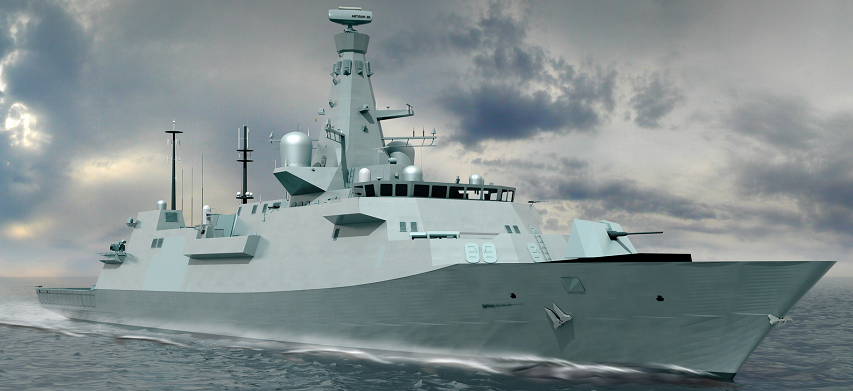
An artist’s rendition of BAE’s Type 26 Global Combat Ship, which was selected as the Canadian Surface Combatant design in 2019, the most recent “largest single expenditure in Canadian government history” (as all major weapon systems purchases tend to be).
(BAE Systems, via Flickr)
On purely economic grounds, it would often make sense to add Canada’s order on to existing US, British, or other allied military orders to benefit from the economies of scale … but pure economic benefits don’t rank highly on the overall scale of importance. There’s also the understandable desire of the government to buy fewer items with wider capabilities as the government’s requirements for the military change with time and circumstance.
Were Canadian defence planners too cavalier in their requirements and design modifications? Maybe. Looking at it from their perspective, though, we should appreciate that they thinking about capabilities for a ship that Canada will use until the 2100s.
Doubts about the CSC are going to keep multiplying. The per unit costs can only increase so much before people start seriously discussing reducing how many of them will be built. You can be sure that some within government are already asking “Why 15? Why not 12?” Serious concerns are also being raised about whether the defence budget can afford to maintain CSC and keep them technologically up to date after the fleet is introduced. Given the CAF’s personnel recruitment troubles, moreover, it’s unclear if the RCN will have enough sailors to operate the full fleet. The first CSC that hits the water, furthermore, will have all sorts of kinks and problems that will need to be sorted out. That’s standard for first ships off the line, but you can be sure that every failing will be met with handwringing and charges of incompetence.
To address these concerns, the government must let DND/CAF better explain what the CSC is designed to do and why it needs to do it. Simply telling Canadians that it’s the right ship isn’t enough when it’s easy to point to lower-cost alternatives. As well, the government needs to be far more transparent about estimates of costs and what’s driving them. Political and public support for the CSC shouldn’t be taken for granted, and growing concerns about the program can’t be simply brushed away.
August 28, 2023
Why Britain Advanced Before Other European Nations | Thomas Sowell
Thomas SowellTV
Published 17 Dec 2021
(more…)

